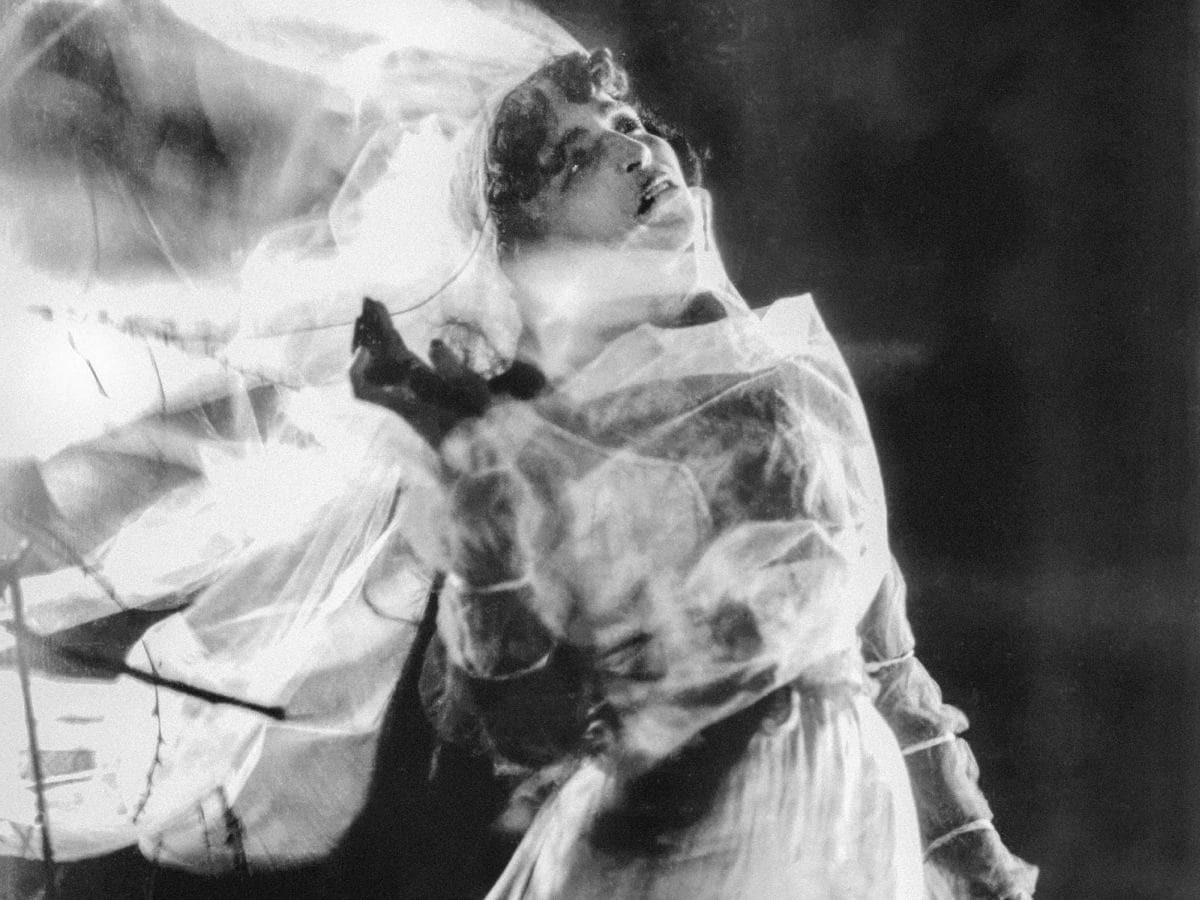Bonjour Cinéma: Jean Epstein and French Cinema of the 1920s
November 2 to 21, 2005
Among the greatest of all filmmakers, Jean Epstein (1897–1953) is probably the one who is least well-known. His artistic and intellectual “homefront” – 1920s Modernism in Paris – is linked to many celebrated names who have gradually overshadowed his own. However, the visionary power of Epstein's films and writings has become ever more evident in recent years. Since his inclusion as one of the principal figures of new film thought in Gilles Deleuze's books on cinema, Epstein's name is being increasingly ranked alongside Eisenstein, Vertov, Rossellini and Godard as one of the inventors of modern cinema.
Using Epstein as a kaleidoscope and magnifying glass, the Film Museum's November Retrospective looks back on an entire era of film history: the exhilarating years of French cinema in the 1920s. The effect that the Parisian film movements had on subsequent developments in the medium can only be compared with the role of the “cinematic revolution” taking place at the same time in the Soviet Union.
Jean Epstein’s major works, created between 1923 and 1947, are at the centre of the show. From these films various paths lead to 25 other masterpieces of French 1920s cinema.
Epstein was an emigré; born in Warsaw, he came to Paris at the age of 11. He first studied medicine and started to write poetry, but by the age of 24 he had already become a passionate cinephile. His first book Bonjour Cinéma is a fever dream of cinema; and his first films, from the poetic-realist love story Coeur fidèle (1923) to his masterful adventure serial Les Aventures de Robert Macaire (1925), turned this dream into feverish filmmaking. Epstein wasn't concerned with whether his films were called artistic or commercial; all that mattered to him was film-as-a-whole – the true poetry of the machine age, a new philosophy of time and motion, an avant-garde which had the potential to partake in a new culture of the masses.
The next “movement” in his oeuvre – 1926 to 1928 – consists of three film gems which reflect on cinema itself. Six et demi, onze, La Glace à trois faces and La Chute de la Masion Usher (arguably the best Poe adaptation ever made) engage in mirror-play, narrative experiments, racing acceleration and trance-like deceleration. In Epstein's films, one finds a unique alliance between modernist narrative and popular subjects which goes far beyond the idea of an “impressionist” cinema.
There is no still-life in Epstein, but living, animated objects. Luminosity, fluidity and mutation supersede all notions of stability. And there is water, over and over again. From 1929 onwards, this element held the strongest attraction for Epstein. He left Paris and started his “third life” as a filmmaker in Brittany. His Breton works, which were all filmed on the sea shore, en plein air and with amateur actors, are pure neoverismo, long before that term had been coined. They are films of "documentary fiction", and their most brilliant examples are Finis terrae (1929), L'Or des mers (1931) and Le Tempestaire (1947) – films like the lighthouses and storms of the Atlantic coast.
The untamed desire for new moving images was something that Epstein shared with many famous contemporaries whose major works are now being brought together in the Bonjour Cinéma show. It is an encyclopedia of everything that was possible in cinema just before the demise of silent movies. This includes the films of the feminist and cinema theorist Germaine Dulac and the contributions of Antonin Artaud; the comedy of René Clair and the wild dance of Jean Grémillon's Maldone; urban street life, partially filmed with hidden cameras (Crainquebille by Jacques Feyder), and the huge, budget-busting literary adaptations such as Jean Renoir's Nana (based on Zola) and Marcel L'Herbier's Feu Mathias Pascal (based on Pirandello); the mysterious port-town stories of Alberto Cavalcanti and Louis Delluc, and as the beautiful face of Ivan Mosjoukine, the most moving and popular film actor of this era.
In 1924, Mosjoukine played the hero in Epstein's Le Lion des Mogols; one year earlier, he had been the driving force behind two highlights of the 1920s – first, as director of Le Brasier ardent (the film which led the spectator Renoir to become a filmmaker), and then as the lead actor in the Ciné-roman which is considered the masterpiece of all popular serials – La Maison du mystère. The title can be taken as a motto for the whole programme: it is in the "house of mysteries" that cinema always reinvents itself.
The retrospective has been organized in close cooperation with the Cinémathèque Française, whose magnificently restored prints are a major element of the show. Claudine Kaufmann, head of the film collection at the Cinémathèque, will give introductory talks before several films. Special thanks go to Nicole Brenez for her inspiration and support for this project. In the coming year, she will edit a Filmmuseum book which presents the writings of Jean Epstein for the first time in German.
